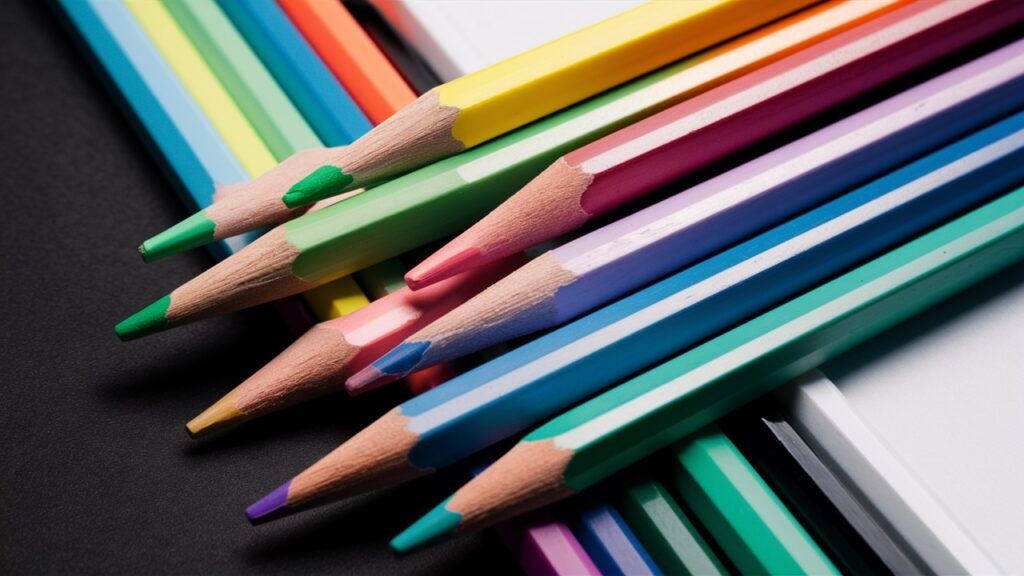Yes, you can sharpen colored pencils in an electric sharpener, but it may cause breakage. Using a manual sharpener or craft knife often yields better results.
Colored pencils are popular tools for artists and hobbyists alike, allowing for vibrant colors and intricate designs. However, sharpening these pencils requires special attention. Many people wonder if electric sharpeners can handle the softer cores of colored pencils. While electric sharpeners offer convenience, they may not always provide the best results.
Over time, the waxy material in colored pencils can clog the sharpener and lead to breakage. Understanding the pros and cons of using an electric sharpener versus manual methods can enhance your coloring experience and help maintain the quality of your pencils.
Myth Vs. Reality: Electric Sharpening Of Colored Pencils
Many believe that using an electric sharpener on colored pencils is safe. This is a common misconception. Electric sharpeners are often designed for regular pencils. They can damage the soft cores of colored pencils.
Colored pencils contain a pigment and wax mixture. This combination can lead to breakage when sharpened incorrectly. A gentle, manual sharpener is usually more effective. It helps preserve the pencil’s integrity and prevents the core from snapping.
Using electric sharpeners may also cause clogs. Wax buildup can hinder the sharpener’s performance. Selecting the right tools is essential for optimal results.
The Anatomy Of Colored Pencils
The anatomy of colored pencils is unique. They contain a core of color pigment mixed with wax or oil. This mixture makes them different from standard pencils. Standard pencils use graphite, while colored pencils use soft pigments. This composition affects how they sharpen.
Colored pencils often break more easily than regular pencils. The softness of the pigments can lead to breakage during sharpening. Electric sharpeners may not be ideal for these pencils. They can apply too much pressure, causing damage.
Using a hand-held sharpener is often recommended. It allows for more control and reduces the chance of breakage. Understanding these differences helps in choosing the right sharpening method.
Challenges Of Sharpening Colored Pencils
Sharpening colored pencils in an electric sharpener presents some challenges. One major issue is breakage. The soft pigment in colored pencils can easily snap during sharpening. Electric sharpeners can apply too much pressure, leading to this problem.
Another concern is wax buildup. Colored pencils often contain wax, which can accumulate in the sharpener. This buildup can clog the mechanism over time. Regular maintenance is important to prevent this issue. Using a manual sharpener or a knife might be better for colored pencils.
Types Of Sharpeners: Pros And Cons
Manual sharpeners are simple tools that require physical effort. They come in various designs, such as handheld or desktop versions. These sharpeners offer better control over the sharpening process. Users can adjust the angle and pressure, reducing the risk of breakage. However, they may require more time and effort.
Electric sharpeners provide quick and efficient sharpening. They save time and effort, making them popular in classrooms. Many electric sharpeners can handle colored pencils, but some may struggle. The wax in colored pencils can clog the blades. Regular maintenance is essential to keep the sharpener functioning well.
Best Practices For Sharpening Colored Pencils
Sharpening colored pencils requires careful techniques to achieve the perfect point. Use a manual sharpener instead of an electric one. This method helps to preserve the pencil’s integrity.
To sharpen effectively, hold the pencil firmly and turn it gently. Avoid applying too much pressure, as this can cause the lead to break. A craft knife is another option, allowing for precise control.
Regularly clean the sharpener to prevent wax build-up. This will keep it functioning well and extend its lifespan. If using an electric sharpener, choose one designed specifically for colored pencils.
Electric Sharpener Maintenance
Electric sharpeners are convenient for sharpening colored pencils. Regular maintenance keeps them working well. Cleaning out wax residue is crucial. Wax from colored pencils can build up inside the sharpener. This residue may cause the sharpener to jam or malfunction. Use a soft cloth or a small brush to remove this build-up. Make sure to unplug the sharpener before cleaning.
Ensuring blade sharpness is also important. Dull blades can lead to uneven sharpening. Check the blades regularly for signs of wear. If they appear dull, replace them to keep your pencils sharp. Proper maintenance prolongs the life of your electric sharpener and improves performance.
Alternative Sharpening Methods
Using sandpaper for fine tuning is an excellent method. It allows for precise control over the pencil tip. Gently rub the tip against the sandpaper. This will create a fine point without breaking the core. It’s also great for maintaining the shape.
Craft knives offer another option for precision sharpening. Carefully slice the wood away from the pencil tip. This technique helps to avoid damage to the pigment inside. Always be cautious and use a cutting mat. A sharp knife results in a cleaner, sharper edge.
Case Studies And Reviews
Many artists have their own preferred methods for sharpening colored pencils. Some suggest using a hand-held sharpener. This helps maintain the pencil’s core and reduces breakage. Electric sharpeners can work, but they may not be the best choice for all colored pencils.
Faqs On Sharpening Colored Pencils
Many people face issues while sharpening colored pencils. The core can break easily. This happens due to the soft pigment inside. Use a hand-held sharpener for better results. It helps maintain the pencil’s integrity.
Electric sharpeners can cause problems. The wax from colored pencils may clog the sharpener. This leads to malfunctions and damage. Clean your sharpener regularly to avoid this.
For best results, choose a sharpener designed for colored pencils. Ensure it has a wide hole to accommodate the larger core. This will minimize breakage and provide a fine point.

Frequently Asked Questions
What Is The Best Way To Sharpen Colored Pencils?
The best way to sharpen colored pencils is using a hand-held sharpener or a craft knife. These methods minimize breakage and preserve the pencil’s core. Electric sharpeners can work, but they may cause damage over time. Always sharpen gently for optimal results.
Why Do My Colored Pencils Break When I Sharpen Them?
Colored pencils break during sharpening due to their soft cores, which can be fragile. Using a sharpener that is too aggressive or applying too much pressure increases the risk of breakage. Choose a gentle sharpener and sharpen slowly for better results.
Can You Sharpen Prismacolor Pencils With A Normal Sharpener?
Yes, you can sharpen Prismacolor pencils with a normal sharpener. Use the wide hole for a gentler touch. This helps prevent breakage and maintains the pencil’s core. Manual sharpeners often work best to preserve the tip and reduce damage. Choose wisely for optimal results.
Can You Sharpen Watercolor Pencils In An Electric Sharpener?
Yes, you can sharpen watercolor pencils in an electric sharpener. However, it may cause damage over time. The waxy core can clog the sharpener, leading to malfunctions. For best results, consider using a manual sharpener designed for colored pencils.
Conclusion
Sharpening colored pencils in an electric sharpener can be convenient, but it comes with risks. The waxy core may lead to clogs and potential damage to the sharpener. For optimal results, consider using a manual sharpener designed for colored pencils.
This approach helps preserve the pencil’s core and extends its lifespan, ensuring vibrant artwork.








